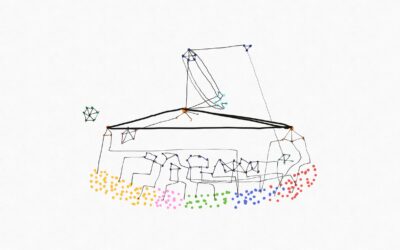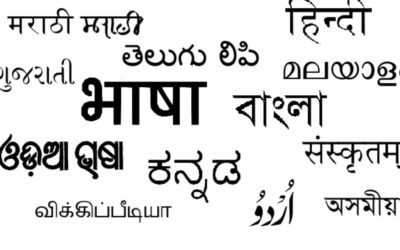Picture from the archives of Setu Abhiyan – Urban team
It is a cold December evening and the chilly wind is blowing the plastic shelter of the outside of the house, back and forth. Seated on the plastic rug fashioned from old 20kg cement bags, I make my notes under the light of an android phone, hanging from the net of a bamboo stick roof we are sitting under.
“Aur jab hum ghar pahonche, koi bhi humse mil nahi raha tha. Sabh darr gaye the.” (And when we reached home, no one was willing to meet us. Everyone had gotten scared), says Lakshmi Ben*. She is a labourer who migrates to Bhuj with her family every year from her home in Madhya Pradesh. Her husband, three children and brother’s family join her.
It is almost the status quo among migrant workers in the country, who move in distress, to the cities, due to the lack of income generation options in their villages, in hope of finding projects that would hire them on a daily or a contractual basis. Yet, the narrative has changed this year, owing to the crisis the pandemic, plus the lockdown put them in, during the summer months.
What Lakshmi Ben describes was her family’s reaction to their return home in 2020, achieved after an arduous and long bus journey. Each ticket costed up to Rs. 480, with no one to help them buy the tickets either. This, even after their COVID-19 tests were negative and proved them to be non-infectious.
“Hum apna khaana paani lekar chale the, par aadhe raste who khatam ho gaya. Hum masks nahi utar paaye, na paani firse bhar paye.” (We had left with our own food and water, but half-way during the journey, it got finished. We couldn’t take our masks off, we couldn’t refill our water.)
This seemed to be the only one (and rather nicer of the lot) stories of the millions of the migrants who had attempted to go back home in the previous months. And it was a pattern that is bound to repeat itself, maybe with consequences even worse than before. As I write this, there are curbs, restrictions, curfews and lockdowns in almost all parts of India.
While the second wave of the deadly virus sweeps across the nation, what becomes of the migrants, who were asked to stay back in the early days of March and April of 2021 with reassurances for their safety, livelihoods and health?
While Lakshmi Ben and her husband could both earn up to Rs 350 per day before the lockdown, the frequency of available work and pay have both taken a hit. They were unable to get any direct benefits from government schemes, which boasted of large promises of financial security and health. With Rs. 3000 and a month’s survival kit provided to them by civil society organizations in Bhuj, buying masks, sanitizers and soap was difficult and unattainable.
Their two children enrolled in the government school opposite to their settlement are unable to access classes on their two mobile phones, (one recently bought android and one for calling) as data charges rise. In-person contact with their teachers has almost disappeared. Their daughter has tears in her eyes as she talks of the distress she faces while studying on her own and completing whatever worksheets reach them as homework.
With COVID-hit cities such as Delhi, Surat, Bangalore, Mumbai and Pune spiralling out of control and the country reporting up to 4 lakh cases as of last week (12th May 2021), it seemed vital for these migrants to take control of their own destiny. They have started to leave cities such as Bhuj for their homes even with work still being available to them.
The ability to provide labor (if the concept is simplified to one factor and considered to be ‘work capacity’) stems from the nutritional status of an individual. The better the nutritional status, the better one’s health and hence, a greater probability of providing labor or the capacity to work. If thought in terms of income, upon assumption that the total income is converted to nutrition, a relationship between work capacity and wage income can be traced. This is called the capacity curve, found by linking different points of work capacity and nutrition (or income) (Ray, 1998)
There is also the possibility of individuals having more sources of income than simply labor wage. For example, in the context of an individual owning a piece of land (capital) that is on rent, there is a provision of non-labor income, i.e. the rent received from lease of the land. If they’re also working for daily wages, their income is now labor income and non-labor income combined. This gives them a distinct advantage over individuals who do not have any means of non-labor income.
Initially, getting to a high capacity of work requires a large amount of nutrition, as the human body takes time and resources to build a threshold point after which it is able to start engaging in work. The relationship becomes linear after this point, as an increase in nutrition may directly lead to an increase in work capacity.
A saturation point is reached near the end of this linear relationship. After this point, the rate of increase is slowed due to the restrictions of the human body in terms of both time and capacity in providing work. The capacity of work and wage income are also dependent on each other, given that more income leads to a higher access to nutrition and eventually a better capacity to work, and so on.
Now, if we look at the migrants under this economic model, the lack of non-labor assets, and vis-à-vis a non-labor income prevents them from simply “doing well”. They spend their daily earnings simultaneously on nutrition and basic needs such as water and sanitation, with no “fallback” income to push their productivity and wages above its daily level. Unable to spend excess income on education, well-being and better nutrition or housing, this, in turn, becomes survival mode, rather than thriving in a new setting, with better opportunities.
This gap of access to non-labor assets for migrants who move away from home, such as Lakshmi Ben, can be made much smaller with the successful implementation of public welfare schemes. Further, it could have been prevented from widening last year. It could have been prevented from becoming catastrophic for millions of workers.
Simple efforts, such as providing cash incomes for three months, or access to ration at PDS rates in states different to their home states, or free and safe travels and quarantine facilities could have been some of the non-labor income/capital assets for migrants. It would have allowed them to survive at a decent nutritional level, while leaving space and energy for any incoming jobs and work that they may have been able to pick up once the restrictions were lifted. But, the migrant workers travelled back (in smaller numbers) to work in tier 1 and tier 2 cities, as the fall-back income was simply not present.
The gaps in equitable access to “life” itself seemed to be widened and they still continue, given people’s rush to get back home before another lockdown brings their livelihoods to a complete halting stop.
While states made efforts to stabilize the disruption cause by the first lockdown with schemes, it seems like the migrant workers are no longer waiting for aid. In a report by NITI Aayog, states are hailed for their ideas and initiatives, “It is commendable that several states took swift measures in assisting stranded migrant workers and launching initiatives in the areas of skill-mapping and livelihood generation for those who had come back to their states of origin and other workers in the unorganised sector.”
How far could the effectiveness of these schemes, such as Maharashtra’s “MahaJobs” portal go today when health infrastructures are failing in every corner of the country?
It is a case of them prioritising their lives over “survival mode” this time, widely in contrast to the situation described by Lakshmi Ben. The question still remains, who are the stocks of resources, commons for? And why not everyone, when a crisis such as the pandemic has hit? Where do the migrants fit into the daily news of casualties, of inspiring stories of aid and (the little) state criticism?
*Name changed to maintain confidentiality




0 Comments